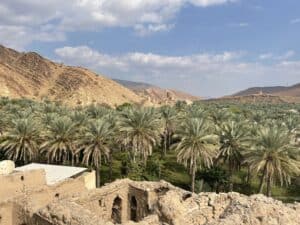

A charming mud-brick village where you can wander around lush banana / palm plantations and old abandoned houses.
Your complete guide to Birkat al Mouz (بركة الموز) , a village in the Ad Dhakhiliyah region. With its mud-brick houses, falaj water ways, and cool oases, it will give you a stunning insight into traditional Omani lifestyle.

This guide is structured as a step-by-step walking tour of Birkat al Mouz, designed to be followed easily with the included map. The order of the sections below mirrors the most rewarding route: starting from the historic quarter, going down Sibani Road to the Falaj/Water ways and returning to catch the best sunset spot.
Nearest City: Nizwa (20 minutes drive)
Distance from Muscat: ~130 km (90 minutes drive)
Key Attractions: Historic Mud-Brick Village, Falaj Al Khatmain (UNESCO Site), Banana Plantations
Best Time to Visit: November to March (for cooler temperatures)
Recommended cafes and accommodation: Banana Café, Alam Cafe, Bait al Sabah Heritage Inn
Local Tip: Wear comfortable shoes for exploring the historic quarter.
I consider Birkat al Mouz one of the most gorgeous villages in Oman. Muscat is 90 minutes’ drive away and it’s only 20 minutes away from Nizwa.
Birkat Al Mouz has an amazing name. It translates into English as ‘the pool of plantains’ – namely ‘the pool of bananas’! The name combines 2 of Oman’s great loves: water and…bananas!
It is, of course, a humorous comment but consider the following true story…
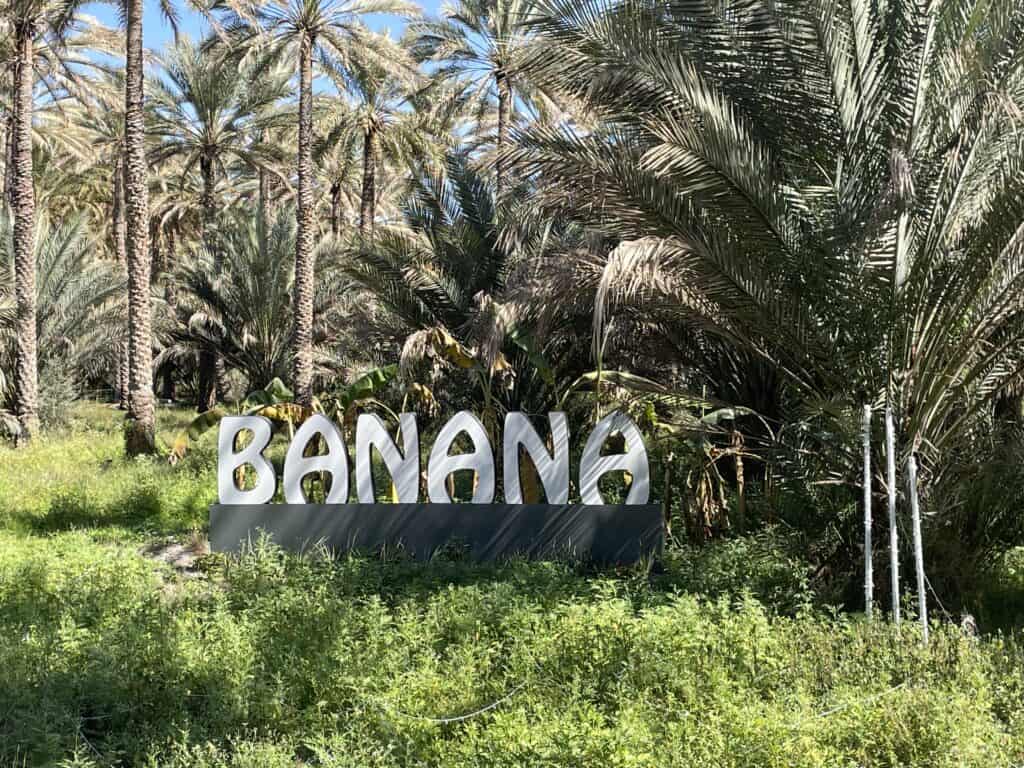
When I first started teaching English in Oman, we had to give a level test to our prospective students. One of the questions on this test was ‘what are your hobbies?’. To which, I would find the answer, ‘Eating bananas.’ At first, I didn’t pay attention. But, as it occurred over and over again, it started to intrigue me. Was eating bananas really a hobby in Oman? As in, at the weekend, when someone wants to relax, they stay at home and indulge in a bowl of plantains? Really?
I was curious and spoke with some of my Omani friends about this. Their interpretation of the mysterious answer was that it represents an ‘easy answer’ to write in English. I understood and it made me smile.
But, back to Birkat al Mouz.

Birkat al Mouz has often been described as a ‘must-see’ ghost town that is situated between the towns of Izki and Nizwa (about 130 km from Muscat). Actually, about 8,000 people still live in the newer part of Birkat al Mouz and it has all the necessary facilities including 4 schools.
The village, which is situated near Jabal Akhdar (the Green Mountain), is famous for its 2 neighbourhoods where you will find some beautiful abandoned mud houses with stunning doors. These will give you an insight into traditional Omani architecture and life as it once was in Oman.
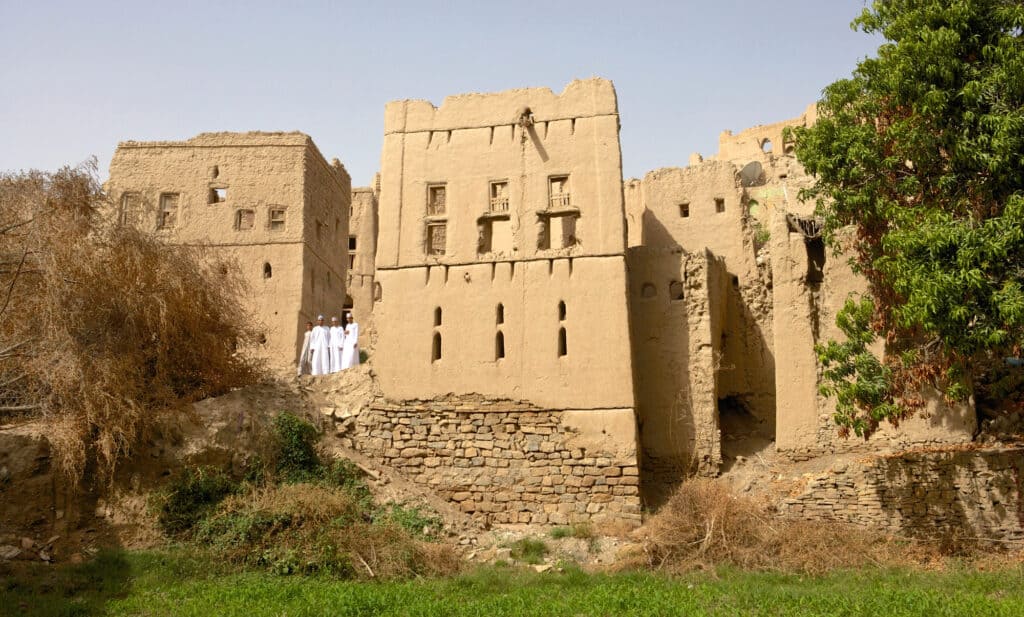
A group of Omani men explore the ruins of these mud-brick houses (Photo: Joussour to Oman)
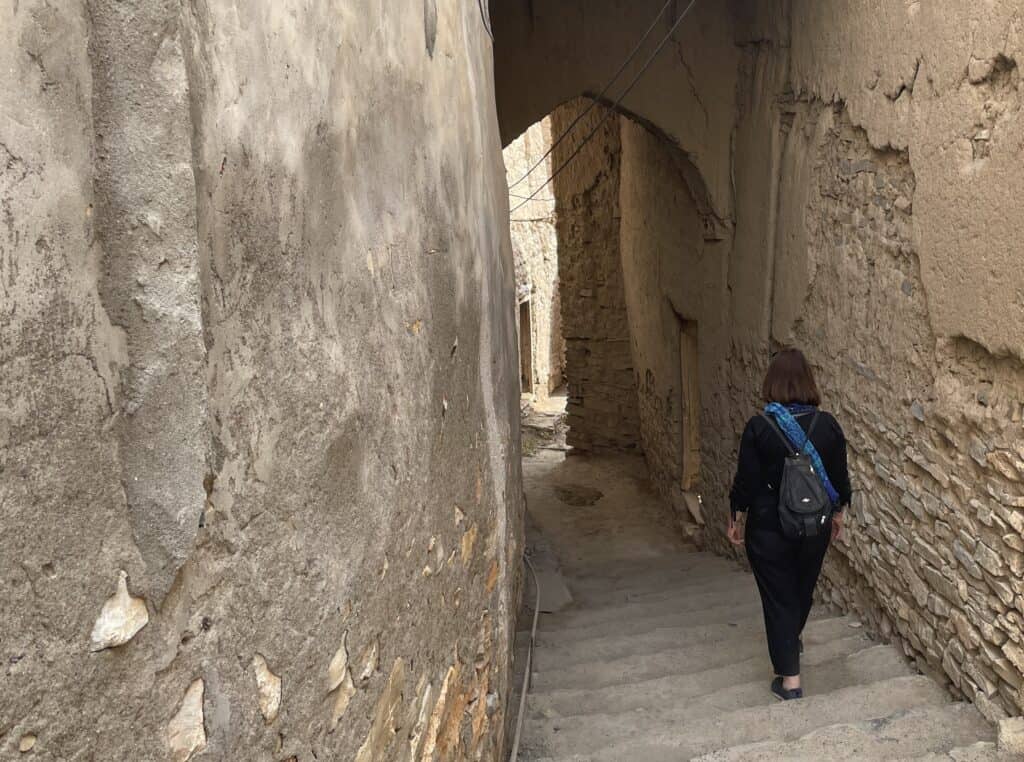
In Sibani, one of the neighbourhoods you can explore, you can climb up and get a glorious view over the valley with the mountains in the distance.
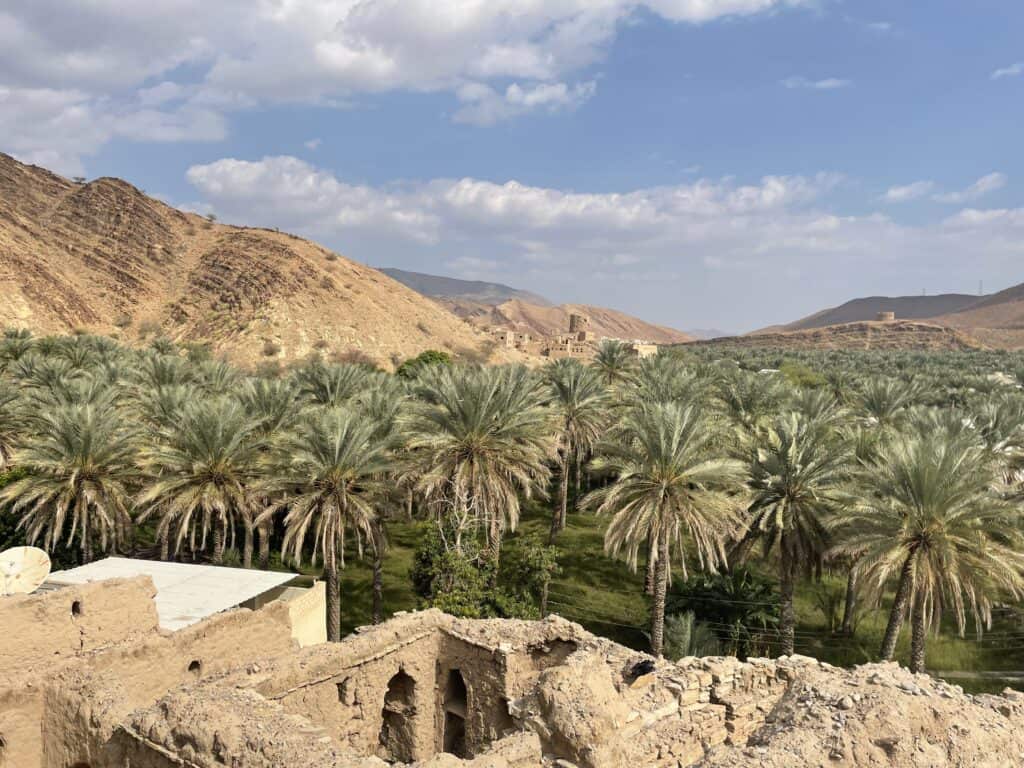
A view of the surrounding mountains and plantations (photo: Joussour to Oman)
When I last visited Birkat al Mouz, I stayed at the renovated Heritage Inn called Bait al Sabah (meaning ‘The Morning House’). It is so well situated. From there, it is easy to walk down Al Sibani lane. Along the way, the gardens full of banana trees and date palms look so lush. The ideal time to visit is between November and March as the outside temperature will allow you to wander around with ease.
Finally, you will arrive at a small white mosque on the left, built over the elevated falaj. When you go under the narrow arch, you will arrive at a modern café called – you have it! – ‘Banana Café.’
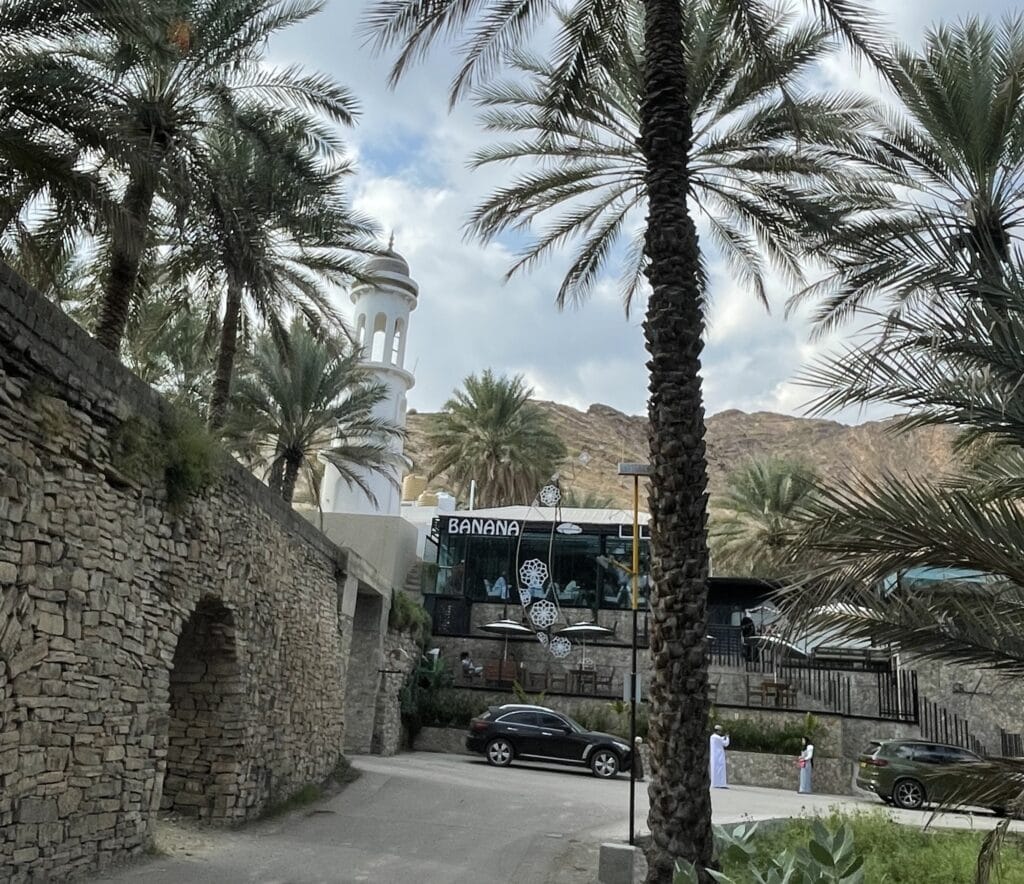

Banana café is recent and its large glass windows offer a stunning view of a date palm plantation. The place is light with modern furniture. On the menu, I found many elements with banana: a strawberry-banana smoothie, banana booster, and banana dream – to name a few.
During my last visit, I had a long conversation with the Kenyan barista about coffee and ended up ordering a ‘cortado coffee’. The café specialises in a wide range of coffees. The result was really good. In recent years, speciality coffee has started to become a trend in Oman.
From the café, you will be able to see the long and narrow Al Jazeera Al Waled Wall that was built to carry the falaj, the hydraulic system of the village.
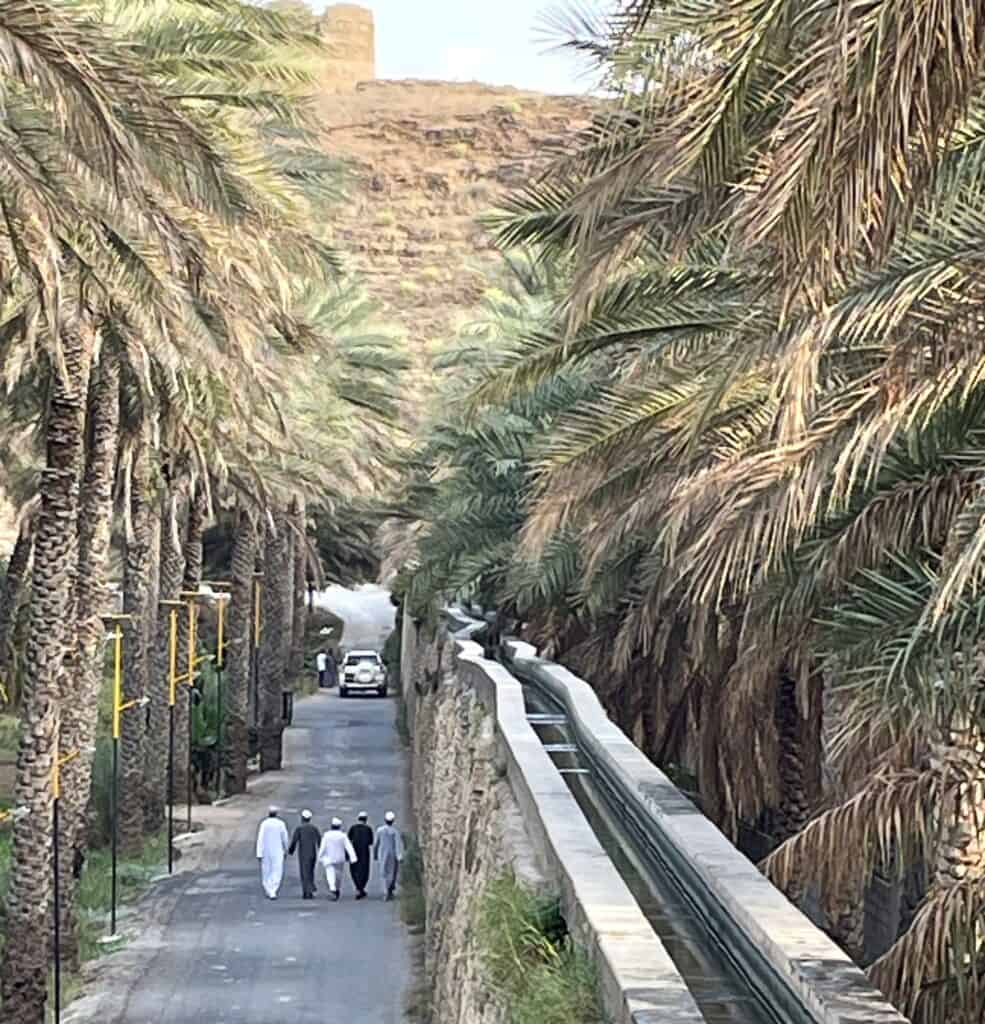
After Banana Cafe, you can stroll down along the water way.
Oman is famous for its traditional irrigation system called Falaj. You may also hear the plural form, Aflaj. The system is an example of ingenious engineering that dates back over 5,000 years.
The word falaj means ‘split into parts.’ It refers to how the water is divided among gardens and farming areas based on the time of day or night. . As was explained to me by my hosts in the city of Bahla, the falaj is managed in each village or town by a local Falaj Committee (Lajnat al-Falaj).
The water flows through a vast network of channels, sometimes even defying gravity. Our local guide, Said, explained that Falaj Al Khatmain is fed by Wadi Al Mu’aidin. It is one of five Omani aflaj listed as a UNESCO World Heritage Site in 2006. This designation recognizes it as an outstanding example of an ancient, sustainable water-sharing system.
While reading about the history of the village, I came to understand that one of the most powerful Omani tribes, the Bani Riyam, settled here. Said explained that the families that make up the tribe lived between Jabel Al Akhdar (the nearby Green Mountain) and Birkat al Mouz.
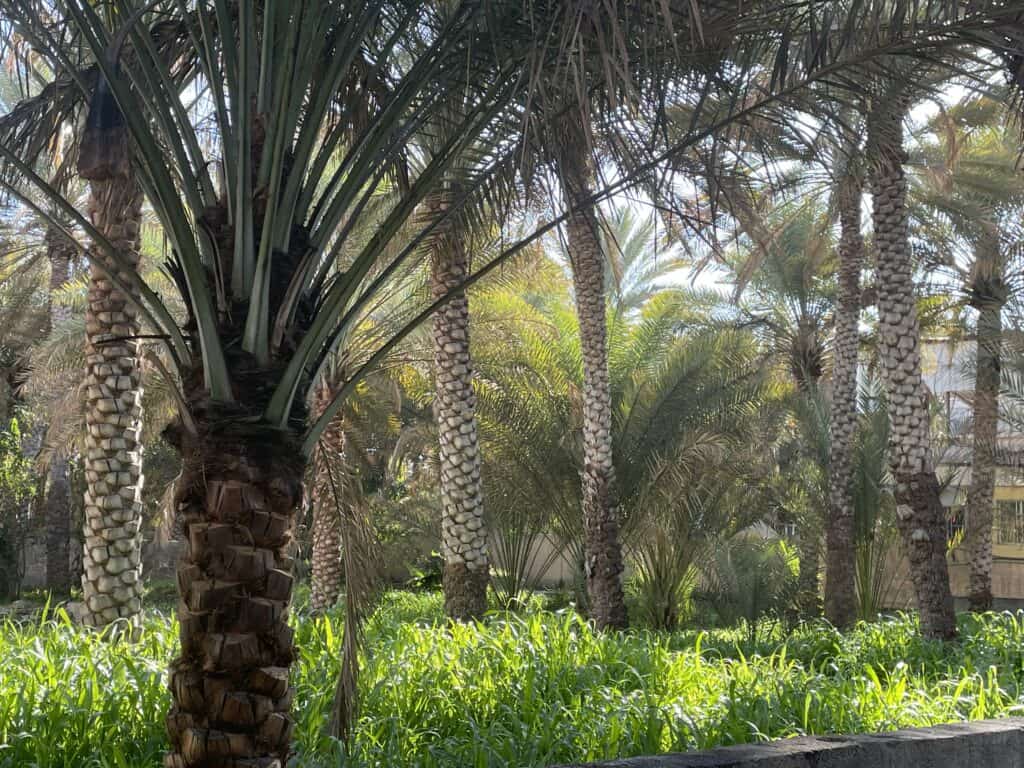
The greenery of the gardens and plantations is a beautiful contrast to the ocre buildings (Photo: Joussour to Oman)
The ever-present sound of water in the village is refreshing. It isn’t difficult for me to understand why the Bani Riyam tribe chose to settle there. If you come to visit, I think you will also see why.
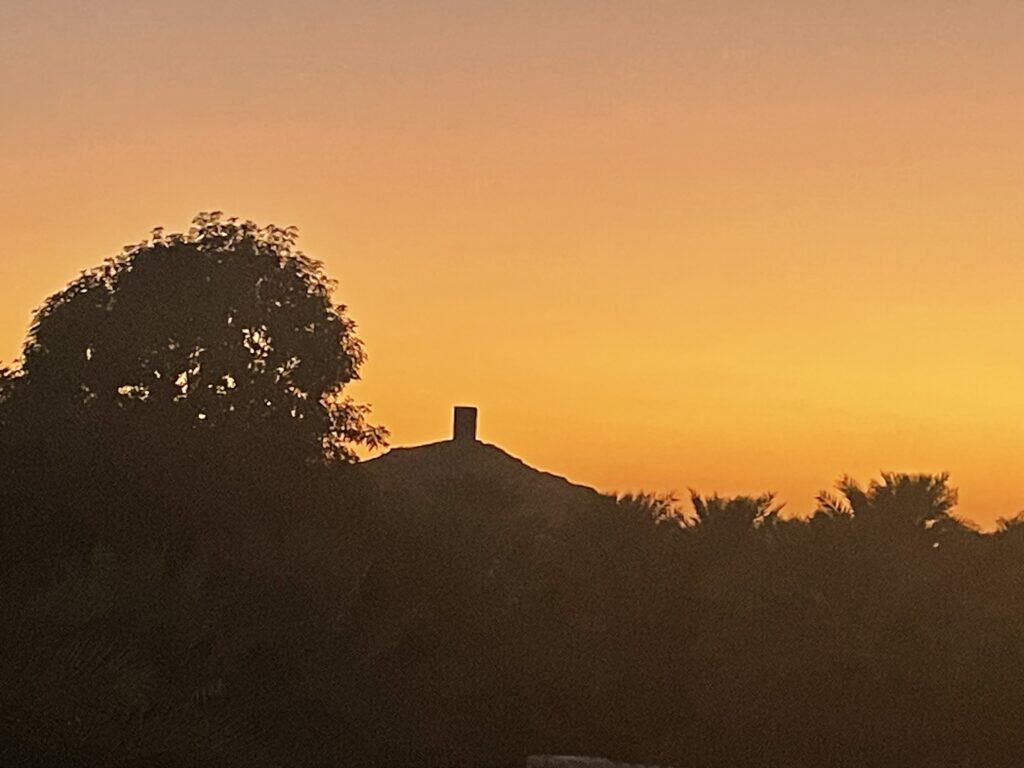
From Banana Café, it takes about 10-15 minutes to walk back to Bait al Sabah Heritage Inn & Café. Climb up to the top terrace and watch the village get bathed in a golden light as the sun sets. This will make for a beautiful end to your day in Birkat al Mouz.
Video credit: Oman Trek via Youtube. Used for informational purposes to showcase Omani culture and tourism. Watch the original on YouTube

Mid-range: Bait Al Sabah Heritage Inn & Café is the only hotel in Birkat al Mouz. This charming renovated mud-brick house is wonderfully situated in the old part of the village. It offers 8 small double rooms that are basic but beautifully refurbished.
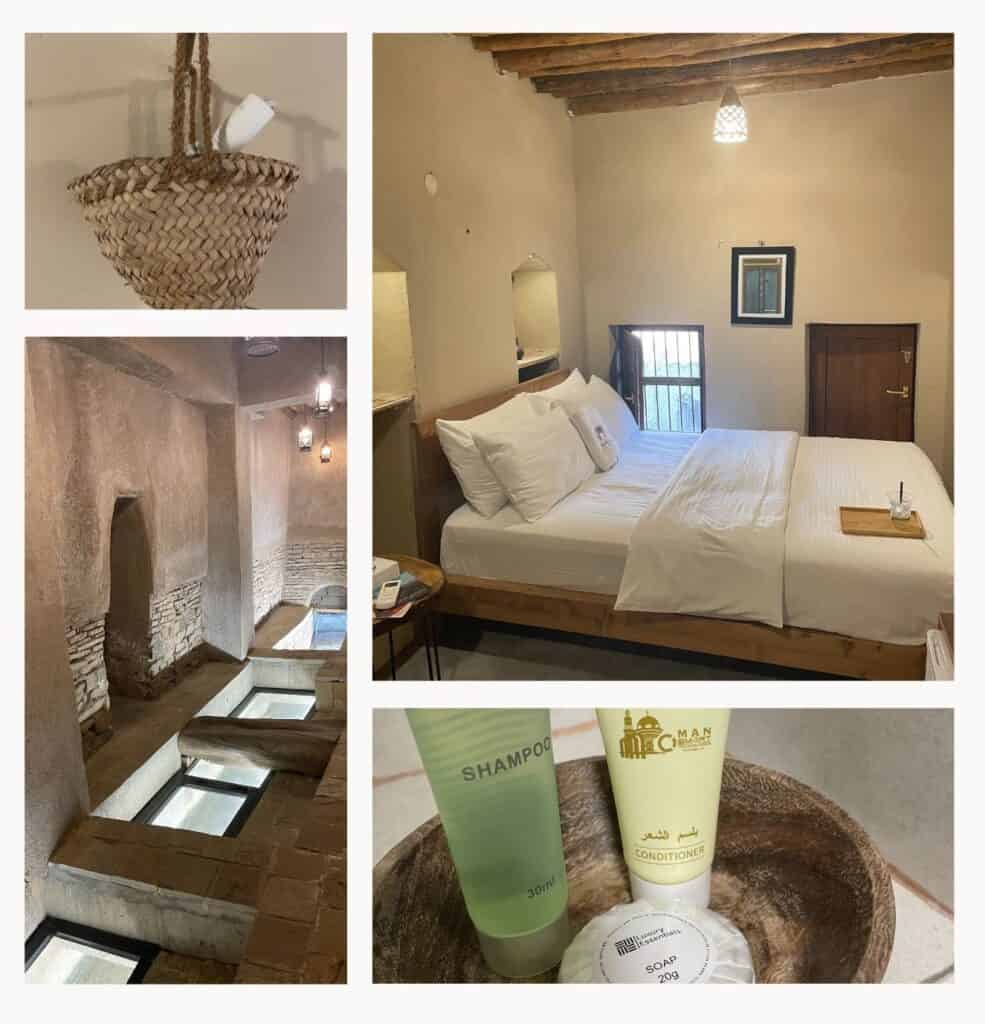
Bait al Sabah is superbly decorated in the traditional Omani style. The falaj passes under the house and you can see it in one part of the ground floor (Photos: Joussour to Oman).
The café in Bait al Sabah: a selection of coffee as well as cakes (try the date cake! Excellent!). The terrace offers amazing views of the historic part of the village. Magical in the evening.
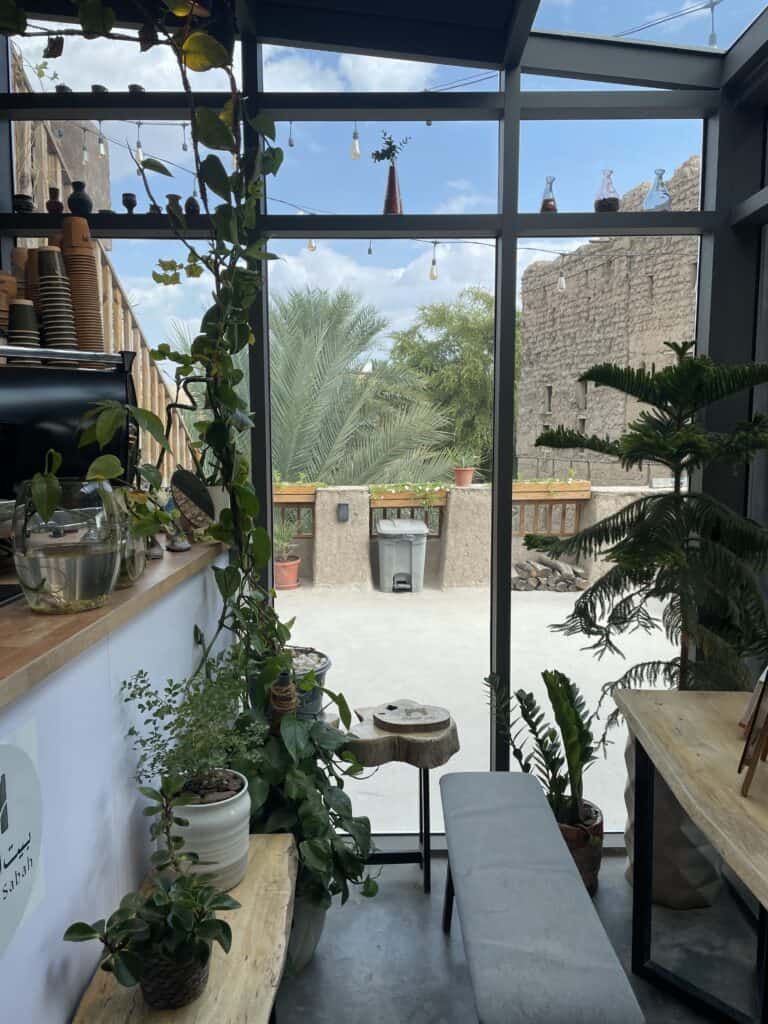
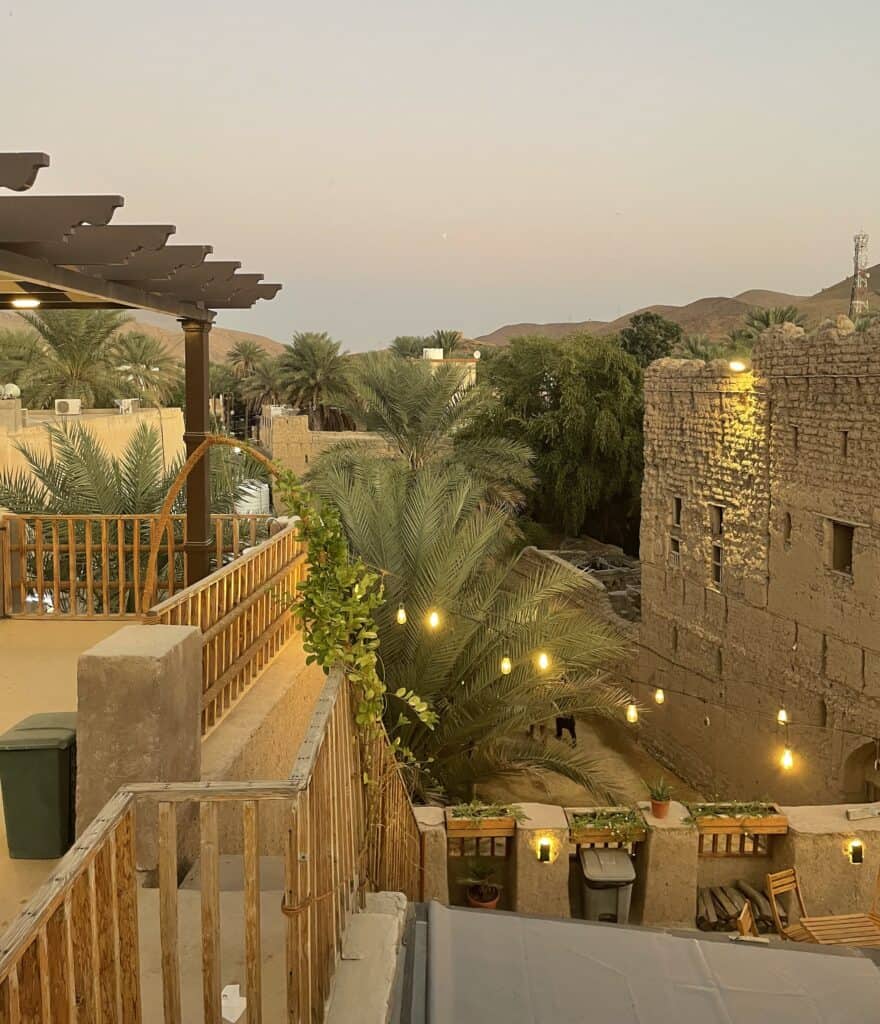
Alam Café is also an excellent choice to enjoy high quality coffee (the best coffee I’ve had in Oman!), quality food and a relaxing atmosphere. Very popular with local people. For more information, see my blog post about it.
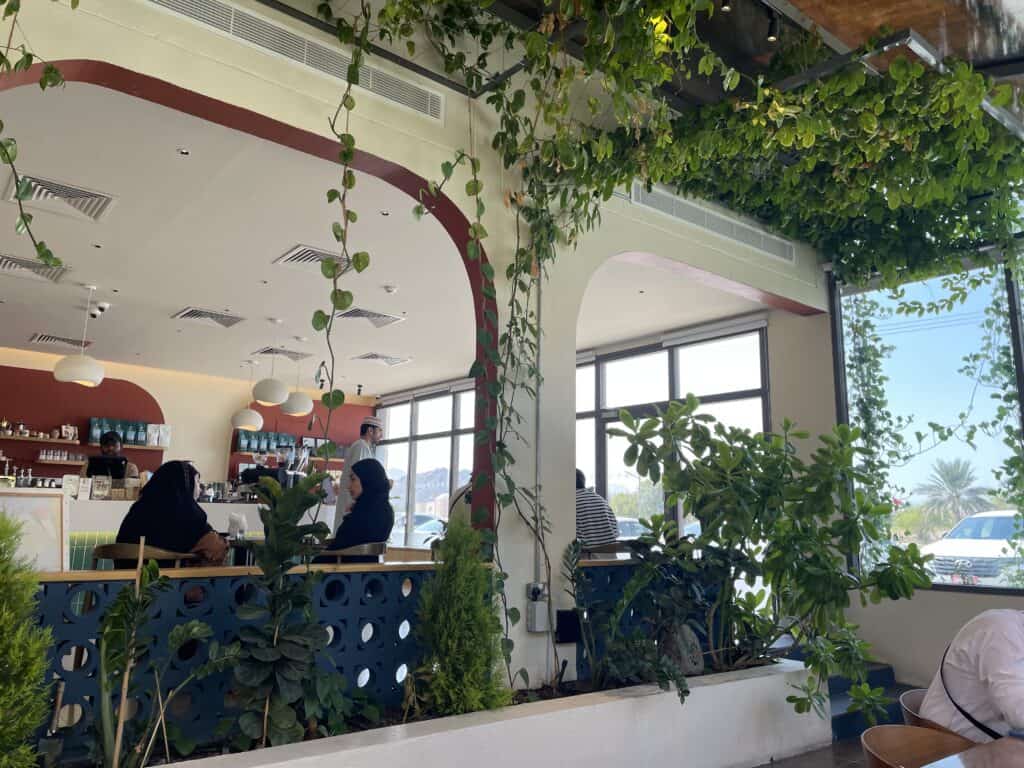
Banana Café: See my earlier comments about this beautiful café which offers excellent coffee and a stunning view over a date grove and the falaj.

Hi, I’m Christine. I’ve lived in Oman for over four years and spent that time travelling across the country - from desert camps to remote mountain villages. Joussour to Oman is where I share practical guides and honest tips for experiencing Omani culture, nature, and daily life. This list is based entirely on places I’ve visited myself - often more than once.
5 responses
🙂
Beautiful post! We just visited this place and was absolutely stunned by its beauty!
So happy to hear that you enjoyed visiting Birkat. I would also recommend visiting Misfat al Abriyeen. It is equally stunning. Enjoy your time in Oman!